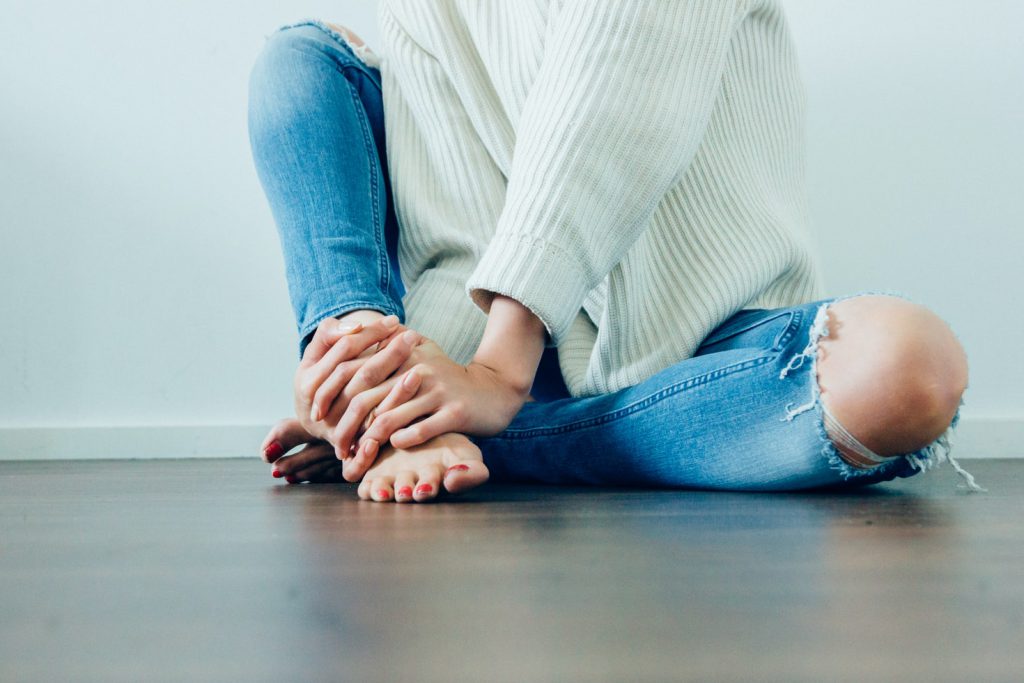12 Ways to Treat Your Plantar Fasciitis Pain at Home
You wake up and, stretching, begin to roll out of bed when the pain in your heel hits you.
If you’re someone who struggles with plantar fasciitis, that’s more than likely an experience you’ve had in the morning. Or maybe the sharp, stabbing pain in your heel kicks in after you’ve been sitting at your desk for awhile. Conversely, it could be a burning ache that begins to bother you after extended time spent on your feet or after exercising.
Though plantar fasciitis pain can take different forms, it’s mostly caused by the overuse, strain, or inflammation of your plantar fascia ligaments. Obviously not particularly pleasant to deal with.
Thankfully, plantar fasciitis occasionally heals itself without treatment, usually within six to 18 months of the initial injury. If you’re someone who finds it hard to sit back and wait, however, there are some therapeutic tactics you can try at home to promote the healing process. They’re effective ones, too. For 97 percent of plantar fasciitis sufferers, consistent treatment helps them recover fully by the sixth month mark.
Below, we walk through what causes plantar fasciitis, as well as some of the at-home remedies and exercises our Asheville, NC, physical therapy team recommends to help.
What is plantar fasciitis?

The plantar fascia is the thick band of tissues connecting your heel bone to the front of your foot. Although plantar fascia ligaments are found largely in the arch of your foot, where they provide arch support and help you walk, overuse results in pain predominantly in the heel. This is an extremely common orthopedic complaint, and it often comes on gradually, with mild pain in the heel that worsens over time. For some individuals, plantar fasciitis can become a chronic condition.
Causes of plantar fasciitis
Think of the amount of time, over the course of your life, that you’ve spent on your feet. Your plantar fascia ligaments get a lot of use, and they’ll experience wear and tear accordingly.
Plantar fasciitis is linked to strain and inflammation stemming from ligament overuse and subsequent weakening. This may be why it’s most common in active adults between the ages of 40 and 70. Slightly more common in women, it’s also often experienced during the late stages of pregnancy. Other plantar fasciitis causes include sudden weight gain and structural foot issues. Long-distance runners and people who work on their feet are at a higher risk of developing it, and sometimes, simply wearing shoes with a different heel drop than what is normal to your body can cause symptoms.
How to manage it: 8 at-home remedies
1. Ice, ice, and more ice!
Elevate and ice your heel for 15 to 20 minutes when it becomes irritated, if not right before, giving it time to rest. You can also try rolling the bottom of your foot over a frozen bottle of water.
2. Opt for supportive shoes.
Tie-up tennis shoes are generally best, with plenty of options designed for those with plantar fasciitis in mind. You can also try adding supportive insoles or orthotics and better arch support to your favorite footwear.
3. Wear a night splint.
Night splints are braces that keep your foot in a flexed position, helping to stretch the arch of your foot and lengthen your plantar fascia overnight as it heals. Some people find them a helpful antidote to morning heel pain and aches, in particular.
4. Don’t go barefoot.
For the time being, you need all the foot support you can get. Save the barefoot walks in the grass for once you’ve recovered, and wear shoes while inside the house, too.
5. Tape your foot.
One 2015 review of several studies on plantar fasciitis found that specific supportive taping of your feet can offer reliable pain relief by stabilizing them, which also helps with the recovery process. Athletic tape or Leukotape with Cover Roll are ideal.
6. Switch up your exercise routine.
While waiting for your ligaments to heal, avoid high-impact exercises that put pressure on your feet, including running. If you’ve been meaning to work swimming or bicycling into your routine, now’s a great time to do it!
7. Give yourself a foot massage.
Keep a golf or tennis ball on hand for simple, immediate pain relief throughout the day. Slip the ball under your foot while either standing or sitting and roll it around while applying firm pressure, including to tender spots.
8. Stretch before getting out of bed.
Stretch before getting out of bed in the morning to help reduce the tissue strain on the plantar fascia before weight bearing (putting your feet on the ground).
The 5 best plantar fasciitis exercises
1. Calf stretch (Gastroc and Soleus)
While leaning your hands against a wall, try straightening the knee of your affected leg while bending out your other knee in front of you. This will stretch your Gastrocnemius. Repeat with your back leg slightly bent to then stretch your Soleus. Keep both feet flat on the ground and hold for 30-60 seconds.
2. Foot flex
For this stretch, you can simply spread out your toes and arch them toward yourself as much as possible. (Tip: this is a good one to do in bed in the mornings!) For a deeper flex, you can also wrap an elastic band around your foot, holding the ends in your hands, while pointing your toes away from you.
3. Staircase stretch
Stand on a step with your feet placed together, keeping the front of your feet firmly on the step and your heels hanging off it. Slowly lift up and down on your toes 10 times. We recommend starting on the ground first to decrease any pain response.
4. Wall squat
Standing with your hands against a wall at shoulder height and shoulder width apart, slowly lower yourself into a squat. Once you feel a good stretch in your calves and heels, stop and hold the position for 20 or 30 seconds.
5. Marble pickups
Sit on a chair with 20 marbles and a bowl at your feet. Pick up one marble at a time by curling your toes around them, placing each one in the bowl. Once you’re done, you can transfer the marbles back onto the floor the same way.
Ready to make a treatment plan for your plantar fasciitis pain? Our team of experts and specialists at Physio Physical Therapy can help take you to the next level of recovery. Make an appointment with us!
